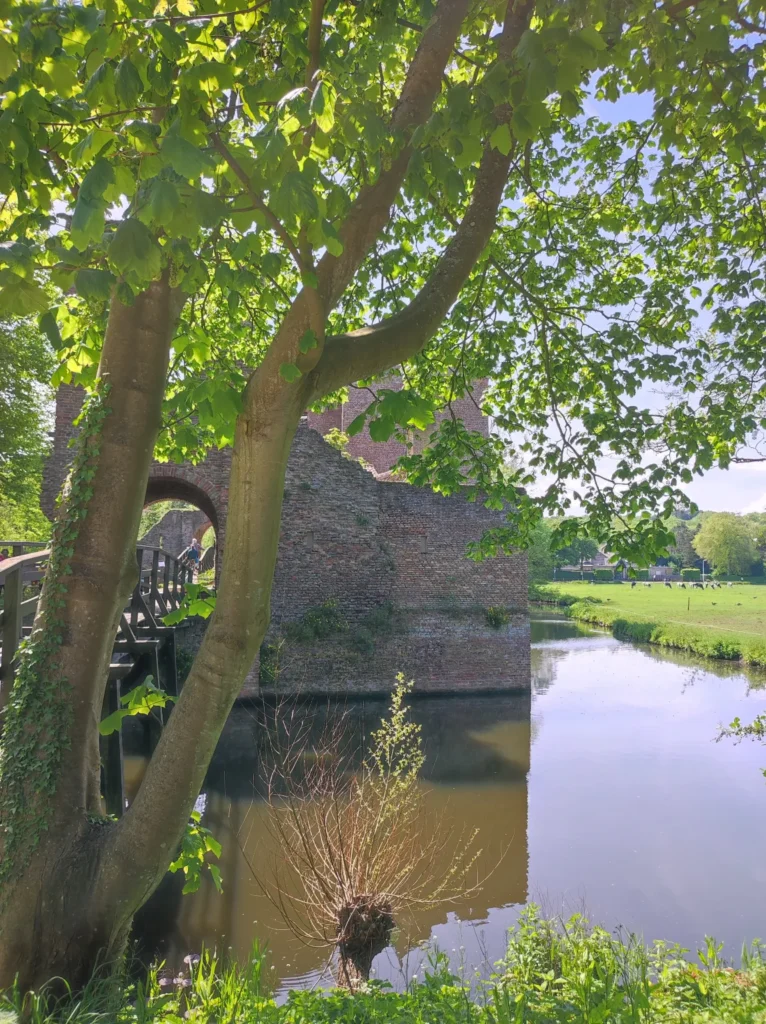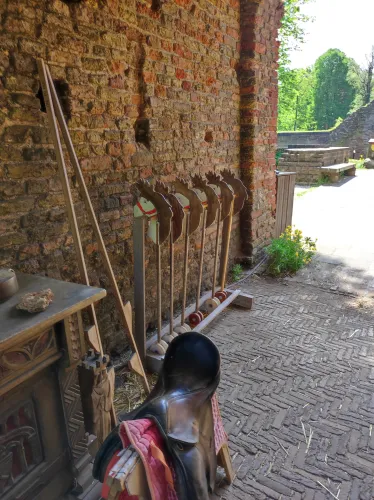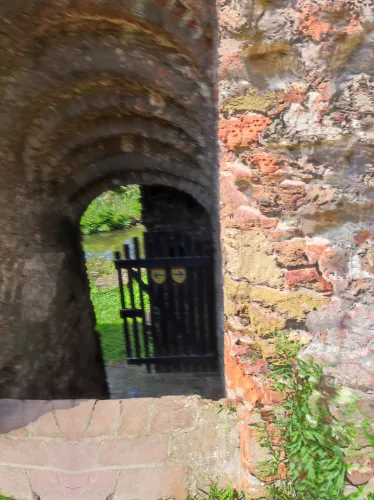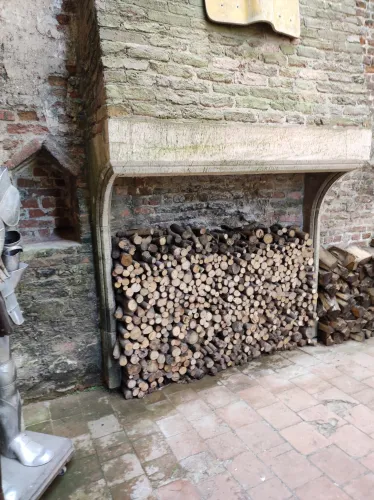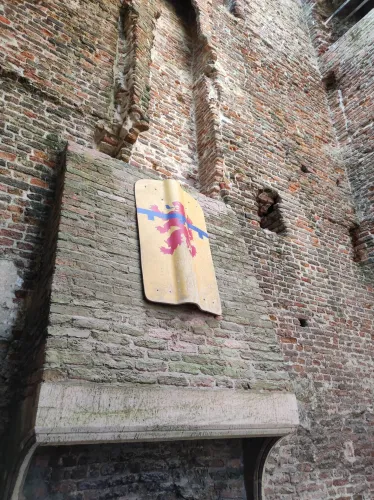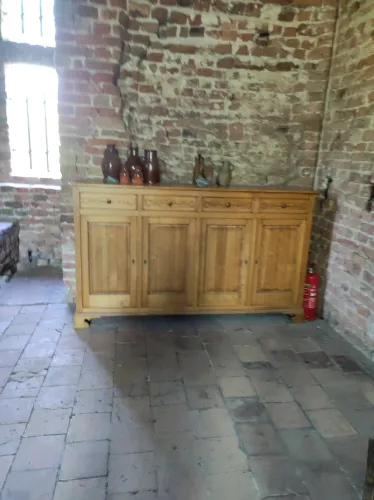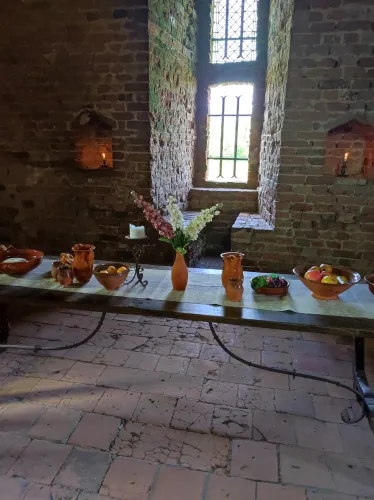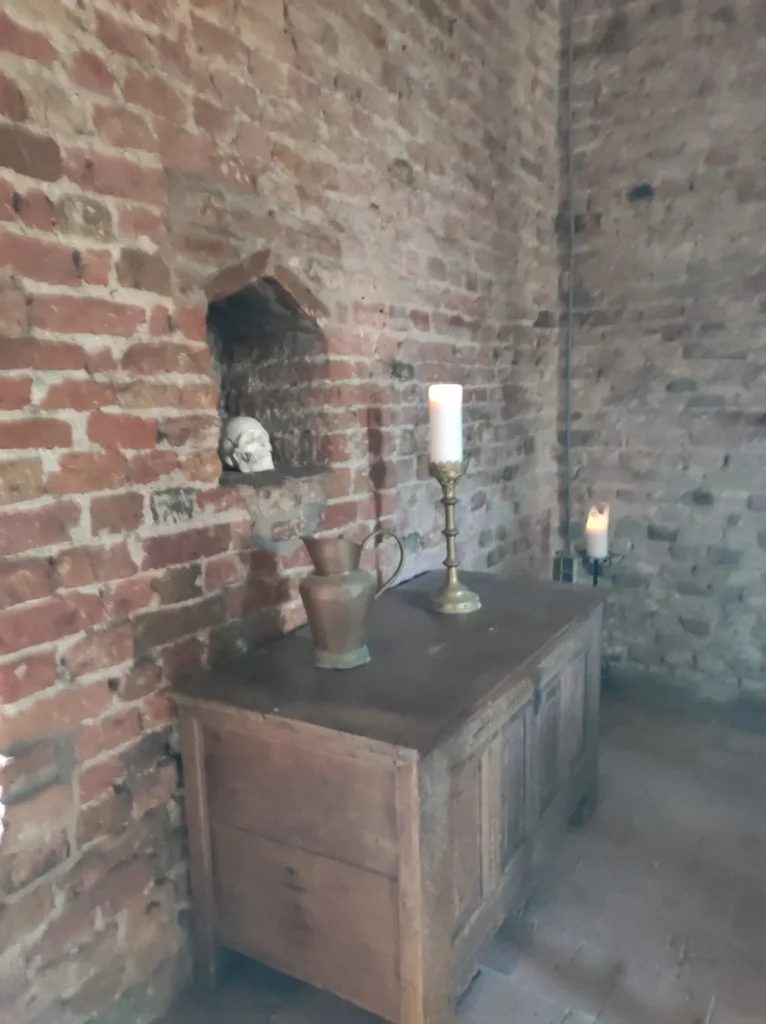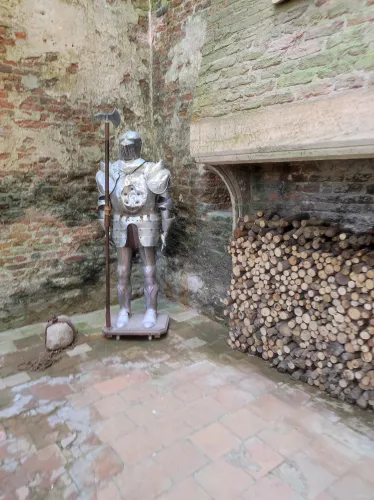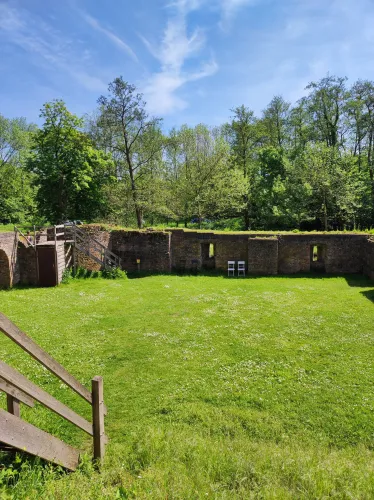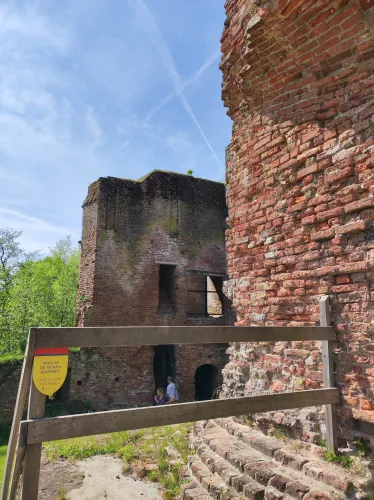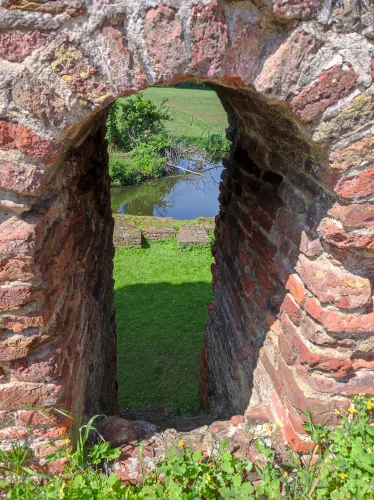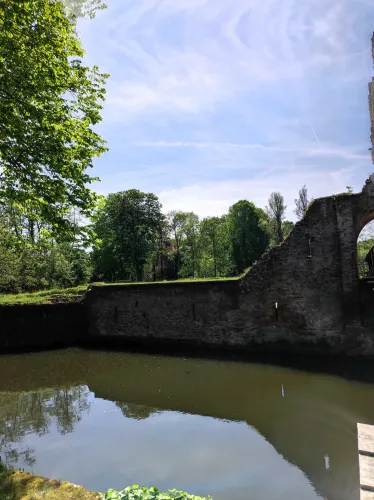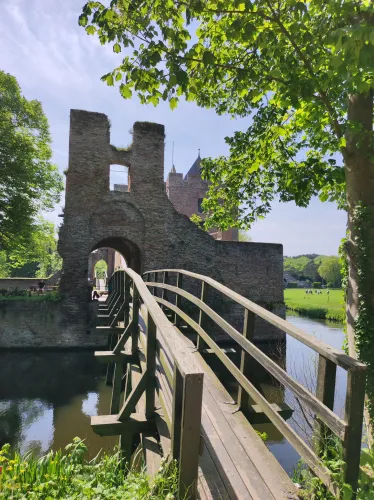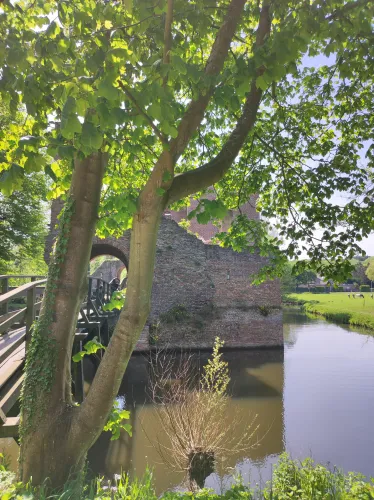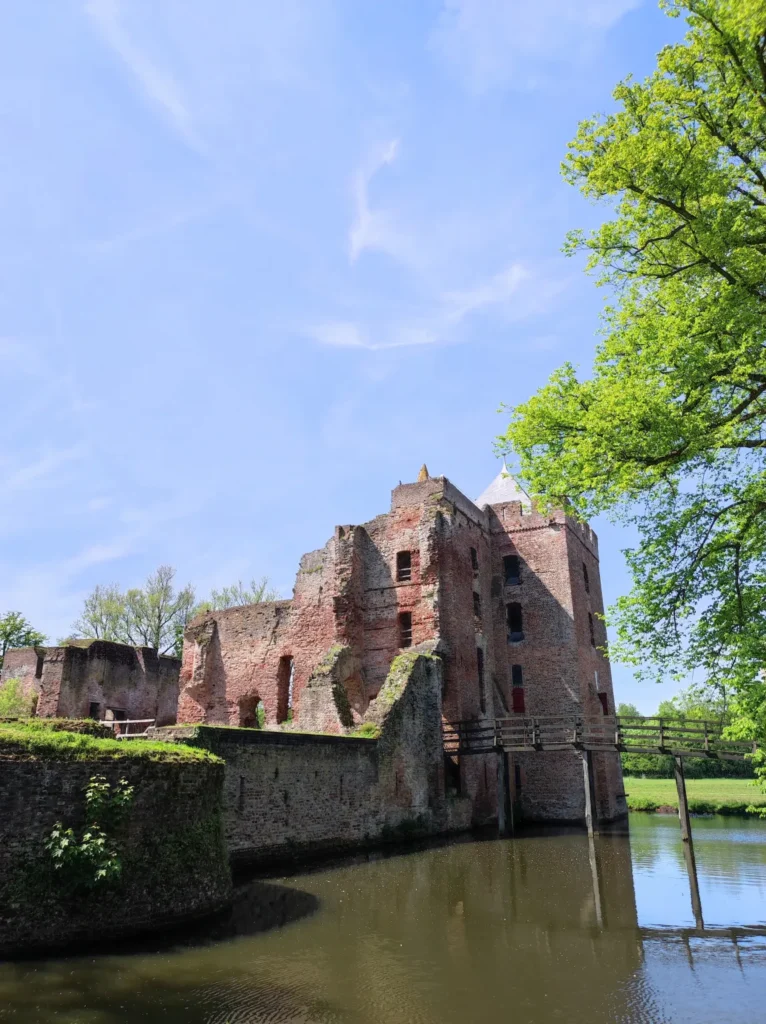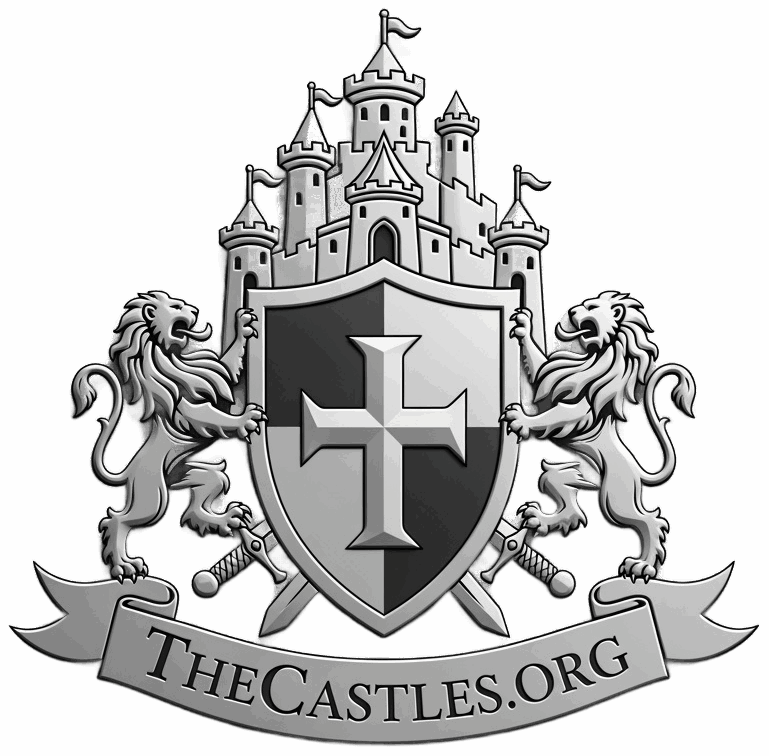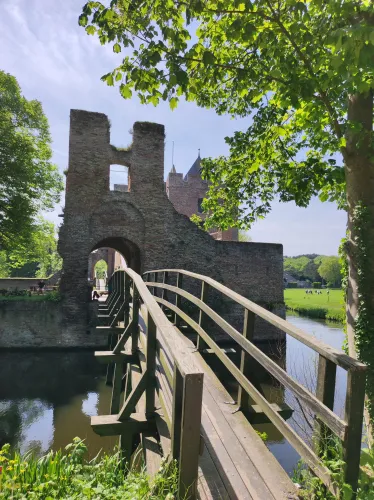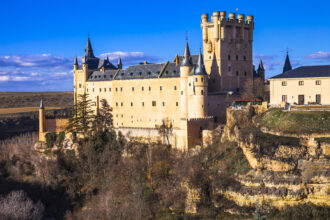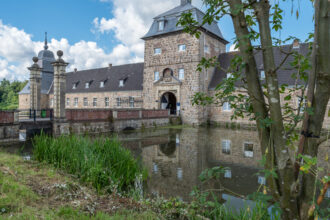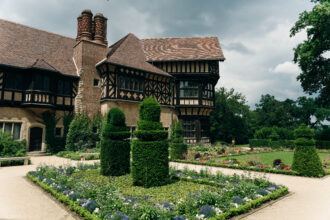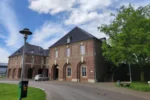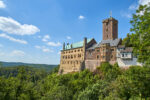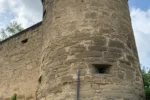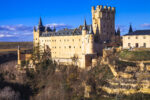In the north of the Netherlands, south-west of the village of Santpoort Zuid, in the middle of a huge forest area, lies the picturesque ruins of Brederode Castle on a coastal dune whose foothills lead into a moor. The impressive Brederode ruins are one of the first national monuments in the Netherlands, owned by the Monumenten Bezit foundation since 2016 and managed by the Heerlijkheid Brederode foundation. The ruins, consisting of an outer bailey and a central castle, which are separated from each other by moats and have numerous towers, were built in 1282 by Willem van Brederode to control the adjacent trade routes, as the main road from Haarlem to Alkmaar ran through there. Around 1300, the inner castle was given three square and one round defensive towers. In 1351, the castle was besieged and destroyed by the Kabeljauw troops under the command of Gijsberts van Nijenrode, Marshal of Count Willem V. Between 1354 and 1426, the complex was rebuilt and remained the seat and residence of the Lords of Brederode until 1426. However, after the castle was restored, its southern part was severely damaged by enemy troops, which is why the Lords of Brederode chose Batenstein Castle as their new residence. Since then, the castle has served as a quarry for the inhabitants of Haarlem. In 1464, the northern part of the castle was made habitable again. However, almost 30 years later, in 1491, the castle was plundered by German troops, until Spanish troops set fire to the complex in 1573 to prevent a new county from being established. After that, the complex fell into disrepair and became a ruin. In 1679, after the death of Johann Wolfart van Brederode, it was transferred to the Counts of Holland and then to the State of the Netherlands. The castle ruins disappeared under the coastal sand dunes until 1862, when the government provided financial resources to halt their complete decline. The ruins were excavated and preserved between 1862 and 1902. Towards the end of the 19th century, reconstruction of the ruins began under the direction of A.J. Enschede. Private donors supported the reconstruction, so that the ruins could be largely restored and made accessible to the public. The ruins are open from March to October on Wednesdays, Fridays, Saturdays and Sundays from 11 a.m. to 5 p.m. and can be visited for an admission fee of €6 for adults and €4 for children between 4 and 11 years of age. I also visited these ruins, which are accessed via narrow bridges, and thanks to the numerous exhibitions, I was able to follow in the footsteps of the Lords of Brederode. When I climbed the keep, I was rewarded with a magnificent view of the surrounding area. Children also get their money’s worth thanks to costumes and a treasure hunt.
